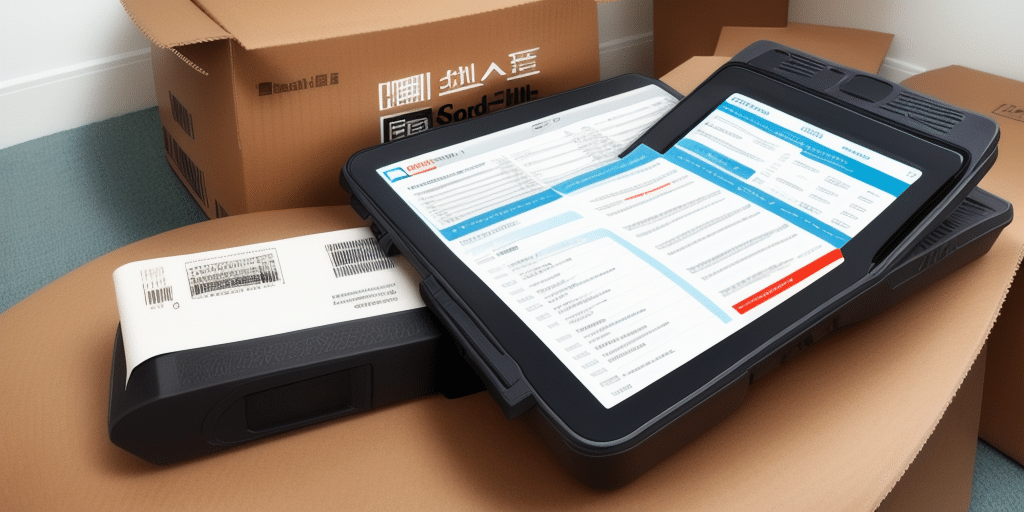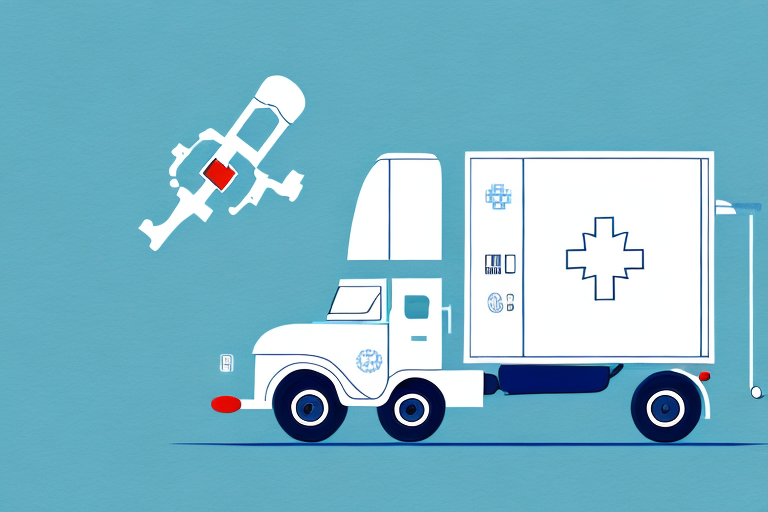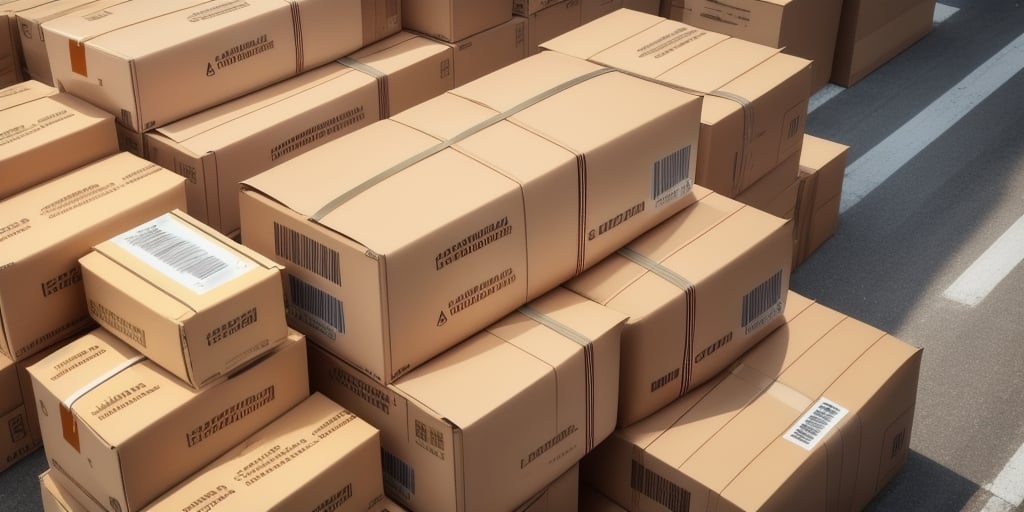Discover the Best UPS E-Commerce Shipping Services for Home Appliances and Electronics
When it comes to e-commerce shipping services, UPS stands out as one of the most reputable and reliable providers in the industry. According to the Business Insider, UPS handles over 5 million packages daily, ensuring timely and safe deliveries across the globe. In this article, we delve into the reasons why UPS is the premier choice for shipping home appliances and electronics. Additionally, we offer valuable tips, tricks, and best practices to help you protect your items during transit, while exploring the most cost-effective ways to utilize UPS shipping services.
Why UPS is the Best Choice for E-Commerce Shipping: A Comprehensive Overview
UPS has established a solid reputation as one of the most reliable and efficient shipping providers in the e-commerce industry. Leveraging advanced technology and a vast global network, UPS ensures that your packages are delivered punctually and in excellent condition. According to the Statista report, UPS holds a significant market share in the U.S. package delivery sector, underlining its dominance and trustworthiness.
Furthermore, UPS offers a suite of e-commerce-specific features that simplify shipment management for small business owners. Whether it's a one-time shipment or a recurring order, tools like UPS My Choice and UPS Connect provide seamless tracking and management capabilities, enhancing the overall shipping experience.
One of the standout advantages of using UPS for e-commerce shipping is their unwavering commitment to sustainability. UPS has implemented numerous initiatives aimed at reducing their carbon footprint, including the adoption of alternative fuel vehicles, optimization of delivery routes, and substantial investments in renewable energy sources. In 2023, UPS reported a 10% reduction in greenhouse gas emissions through their sustainability programs, as highlighted in their sustainability report. By choosing UPS as your shipping provider, you align your business with a company dedicated to environmental stewardship and reducing its impact on the planet.
Protecting Your Home Appliances and Electronics During Shipping: Tips and Tricks
Shipping home appliances and electronics requires meticulous care to prevent damage during transit. Here are essential tips for properly packaging your items:
- Use sturdy boxes and high-quality packaging materials such as bubble wrap, foam, or packing peanuts to cushion your items effectively.
- Wrap each item thoroughly with bubble wrap or foam, and secure the packaging with strong packing tape to provide maximum protection.
- Select a box that is slightly larger than your item, allowing space to add extra padding around the edges for enhanced protection against impacts.
- Seal the box securely with high-strength packing tape, and label it with clear and visible shipping labels to ensure proper handling.
Implementing these steps significantly increases the likelihood that your home appliances and electronics will arrive safely at their destination.
Additionally, it's crucial to consider the climate conditions during shipping. Extreme temperatures can adversely affect electronic components and other sensitive parts. If you're shipping during extreme seasons, such as summer or winter, opt for insulated packaging materials to protect your items from temperature fluctuations.
The weight of your items is another critical factor. Heavy appliances and electronics can pose handling challenges and may require special shipping considerations. Ensure your package is labeled as "heavy" or "fragile" to prompt careful handling during transit, reducing the risk of damage.
For more detailed packaging guidelines, refer to UPS's packaging inspection services.
The Importance of Proper Packaging for Safe Shipping: What You Need to Know
Proper packaging is a cornerstone of safe shipping, especially when dealing with delicate home appliances and electronics. Beyond the foundational tips previously discussed, understanding the variety of packaging options available is essential. UPS provides a comprehensive range of packaging materials and services, including corrugated boxes, padded envelopes, and specialty boxes tailored for specific items. Additionally, UPS offers custom packaging solutions based on the size and weight of your items, ensuring optimal protection during transit.
The choice of cushioning material plays a pivotal role in safeguarding your items. Common options include bubble wrap, packing peanuts, and foam inserts, each serving a unique purpose:
- Bubble Wrap: Ideal for wrapping fragile items like electronics and glassware, providing a protective barrier against impacts.
- Packing Peanuts: Suitable for filling empty spaces within boxes, preventing movement and reducing the risk of damage.
- Foam Inserts: Best for items requiring rigid support, offering superior cushioning for heavier or more delicate products.
Choosing the appropriate cushioning material based on the fragility and weight of the item is crucial. For instance, delicate electronics may necessitate multiple layers of bubble wrap, while a sturdy appliance might benefit from foam inserts for added stability.
Proper labeling is equally important for safe shipping. Ensure each package is labeled accurately with the sender's and recipient's contact information. Moreover, include any special handling instructions such as "Fragile," "Handle with Care," or "This Side Up" to guide handlers and minimize the risk of improper handling.
For more detailed packaging guidelines and materials, visit UPS's packaging materials and inspection services.
UPS Ground vs. UPS Air: Which is Better for Shipping Home Appliances and Electronics?
UPS Ground and UPS Air are two primary shipping options offered by UPS, each catering to different needs based on speed and cost. UPS Ground is generally more cost-effective, making it an ideal choice for heavier and larger items that do not require expedited delivery. According to UPS's service offerings, UPS Ground typically delivers within 1-5 business days, depending on the distance.
On the other hand, UPS Air, which includes services like UPS Next Day Air and UPS 2nd Day Air, offers faster delivery times, often arriving within 1-2 business days. While UPS Air services are more expensive, they are better suited for customers who need urgent delivery or are shipping high-value electronics and appliances where quicker transit reduces the risk of damage.
When deciding between UPS Ground and UPS Air for shipping home appliances and electronics, consider the following factors:
- Size and Weight: UPS Ground is more economical for bulkier and heavier items, whereas UPS Air is optimal for smaller, lighter packages.
- Delivery Speed: If the items are time-sensitive, UPS Air provides faster delivery speeds, ensuring your products reach the destination promptly.
- Distance: Longer distances may justify the faster shipping speeds and reduced transit time of UPS Air.
- Fragility: For delicate electronics and appliances, UPS Air minimizes handling and movement during transit, reducing the risk of damage.
Additionally, UPS Air services offer more advanced tracking and monitoring options, providing real-time updates and enhanced visibility over your shipment's status. This can offer peace of mind when shipping high-value items, ensuring that they are closely monitored throughout their journey.
Choosing the appropriate shipping method based on these factors can optimize both cost and delivery efficiency for your e-commerce business.
How to Track Your Shipment with UPS E-Commerce Shipping Services: A Step-by-Step Guide
Effective tracking is essential for ensuring the timely and safe delivery of your home appliances and electronics. UPS offers a range of tracking options that enable you to monitor your shipment's progress from dispatch to delivery. Here's a step-by-step guide to tracking your UPS shipments:
- Obtain Your Tracking Number: Once your shipment is processed, UPS provides a unique tracking number. This can be found on your shipping receipt, UPS email notifications, or within your UPS account dashboard.
- Visit the UPS Tracking Page: Navigate to the UPS Tracking page on their official website.
- Enter the Tracking Number: Input your tracking number into the designated field and click "Track." The system will display the current status of your shipment, including its location and estimated delivery date.
- Manage Package Preferences: UPS provides options to modify delivery preferences, such as rescheduling delivery times or redirecting the package to a different address, directly from the tracking interface.
For those who prefer monitoring on-the-go, UPS offers a robust mobile application available for both iOS and Android devices. The UPS mobile app provides real-time updates on your shipment’s location, estimated delivery time, and allows you to manage package preferences and schedule delivery times conveniently from your smartphone or tablet.
Additionally, UPS offers notifications via email and SMS, which can be customized to receive alerts at various stages of the shipping process. This ensures you stay informed and can take immediate action if necessary.
Understanding UPS Insurance Options for Shipping Home Appliances and Electronics
Protecting your valuable home appliances and electronics during shipping is paramount. UPS offers a comprehensive range of insurance options to safeguard your investments and provide peace of mind:
- Declared Value: This standard insurance automatically covers packages up to a certain value (typically $100 or $50, depending on the service level). Declaring a higher value ensures reimbursement in case of loss or damage. You can declare a value of up to $50,000 by paying an additional fee.
- UPS Capital: For high-value items, UPS Capital provides additional insurance coverage beyond the standard declared value. This option is ideal for shipping premium electronics and high-end appliances, offering extended protection tailored to the specific needs of valuable shipments.
It's crucial to recognize that UPS insurance options vary based on the type and value of the item being shipped. When shipping home appliances or electronic devices, you may need to provide additional documentation, such as proof of value or specific packaging details, to ensure that your item is adequately protected under UPS's insurance policies.
Moreover, UPS offers specialized insurance options for unique items like artwork, jewelry, and antiques, each requiring tailored coverage to address their particular risks and values.
When selecting an insurance option for your shipment, consider the following:
- Item Value: Accurately assess the value of your item to determine the necessary level of coverage.
- Risk Assessment: Evaluate the potential risks involved in shipping, such as distance, handling frequency, and item fragility.
- Comparison with Other Carriers: To ensure you are obtaining the best coverage for your needs, compare UPS insurance options with those offered by other shipping carriers. This comparison can help you identify the most cost-effective and comprehensive insurance solutions available.
For more information on UPS insurance options and to purchase additional coverage, visit the UPS Insurance Services page.
How to Save Money on UPS E-Commerce Shipping Services for Home Appliances and Electronics
Shrinking shipping costs while maintaining service quality is a primary concern for e-commerce businesses. Here are several strategies to reduce expenses when using UPS shipping services for home appliances and electronics:
- Utilize Online Shipping Tools: UPS provides online shipping platforms like UPS Shipping Tools, which often offer discounted rates for online purchases. By managing shipments digitally, you can take advantage of bulk shipping discounts and streamlined processes that reduce overall costs.
- Sign Up for a UPS Account: Creating a UPS account grants access to exclusive savings, discounted shipping rates, and monthly billing options. Regular users benefit from accumulated discounts, lowering the per-shipment cost.
- Bundle Multiple Items into a Single Shipment: Consolidating multiple items into one shipment can significantly reduce shipping costs. This approach minimizes the number of packages processed and leverages UPS's economy of scale pricing.
- Optimize Shipping Timing: Scheduling shipments during off-peak times or choosing standard delivery options like UPS Ground instead of expedited services can lead to substantial savings, especially for large and heavy items that don't require immediate delivery.
- Proper Packaging: Adhering to proper packaging guidelines not only protects your items but also prevents additional costs associated with damaged goods. UPS offers packaging resources to help you comply with their standards.
- Use Recycled or Eco-Friendly Packaging Materials: Investing in environmentally friendly packaging can reduce material costs in the long run and may qualify you for certain UPS sustainability discounts.
Implementing these strategies can lead to significant cost reductions, enhancing your e-commerce business's bottom line while ensuring reliable shipping services.
Additionally, consider leveraging UPS's business insights tools to analyze shipping patterns and identify further opportunities for cost savings and efficiency improvements.
The Benefits of Using UPS E-Commerce Shipping Services for Large and Heavy Items
Shipping large and heavy items, such as major home appliances and sizable electronics, presents unique challenges. UPS addresses these challenges by offering a variety of specialized shipping options tailored to accommodate the size and weight of your products:
- Freight Services: UPS Freight offers reliable and efficient solutions for shipping oversized and heavyweight items. With services like UPS Freight, you can transport large appliances and electronics across the country with tailored handling and scheduling.
- Less Than Truckload (LTL) Shipping: LTL Shipping is an economical option for shipping large items that do not require the full capacity of a truck. By sharing truck space with other shipments, LTL reduces costs while ensuring timely delivery.
These shipping options provide enhanced flexibility and more cost-effective pricing compared to standard parcel services. This ensures that your large and heavy items are transported securely and efficiently.
Additional benefits of using UPS's e-commerce shipping services for large and heavy items include:
- Real-Time Tracking: UPS provides advanced tracking capabilities, allowing you to monitor your shipment's progress in real-time. This ensures you remain informed about the location and estimated arrival time of your package at all stages of transit.
- Expert Handling: UPS employs experienced professionals who specialize in handling and transporting large and heavy items. Their expertise minimizes the risk of damage during transit and ensures proper loading, unloading, and delivery procedures are followed.
- Customizable Solutions: UPS offers customizable shipping solutions tailored to meet the specific needs of your business, including delivery scheduling, special handling instructions, and packaging services designed for large and heavy items.
Leveraging UPS's specialized shipping services for large and heavy items not only ensures safe and timely delivery but also enhances your customer satisfaction by providing reliable and professional handling of substantial shipments.
To explore UPS's full range of freight and LTL shipping options, visit the UPS Freight Services page.
Common Mistakes to Avoid When Shipping Home Appliances and Electronics with UPS
Shipping home appliances and electronics with UPS can be highly effective, provided you avoid common pitfalls that may compromise the safety and timely arrival of your shipments. Here are several mistakes to steer clear of:
- Poor Packaging: Inadequate or improper packaging increases the risk of damage. Avoid using weak boxes or insufficient cushioning materials. Always adhere to UPS's packaging guidelines to ensure your items are well-protected.
- Choosing the Wrong Shipping Service: Selecting a shipping service that doesn't align with your delivery timeline or the nature of your items can lead to delays or increased costs. Assess your shipping needs carefully before choosing between UPS Ground, UPS Air, Freight, or LTL services.
- Incorrect Labeling: Inaccurate or incomplete labeling can result in misdelivered packages or delays. Ensure that all shipping labels are clear, legible, and include correct sender and recipient information, along with any necessary handling instructions.
- Ignoring Weather Conditions: Shipping during extreme weather can adversely affect sensitive electronics and appliances. Incorporate weather considerations into your shipping schedule to avoid transit during heavy rain, snowstorms, or extreme temperatures. Use appropriate packaging solutions like insulated boxes or temperature-controlled containers when necessary.
- Not Declaring the Item Value: Failing to declare the correct value of your items can leave you uninsured against loss or damage. Accurately declare the value and consider purchasing additional insurance coverage for high-value items.
- Overlooking Customs Requirements: For international shipments, neglecting customs documentation can lead to delays or fines. Ensure that all necessary paperwork is completed accurately to facilitate smooth customs clearance.
By avoiding these common mistakes and adhering to best practices, you can significantly enhance the safety and efficiency of shipping home appliances and electronics with UPS. This ensures not only the integrity of your products but also enhances customer satisfaction and trust in your e-commerce operations.
In summary, UPS offers a wide array of e-commerce shipping options tailored to suit the specific needs of shipping home appliances and electronics. From selecting the right service and packing materials to utilizing tracking and insurance services, UPS provides comprehensive solutions to support your shipping requirements. Implementing the strategies and avoiding the pitfalls discussed in this article will help you achieve successful and cost-effective shipping outcomes.
Additionally, always stay informed about seasonal weather patterns and adjust your shipping strategies accordingly. Investing in quality packaging and adhering to UPS's recommended practices will further reduce the risk of damage and ensure that your products reach customers in pristine condition.









